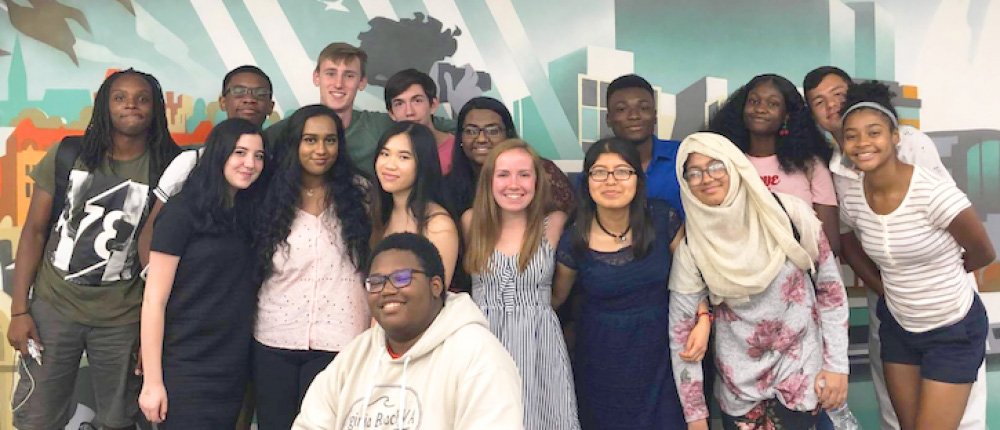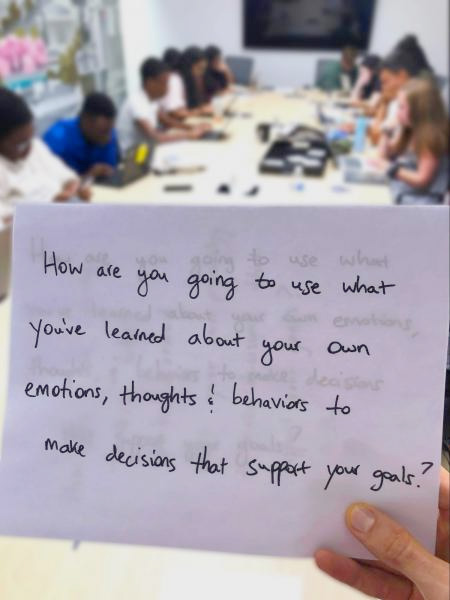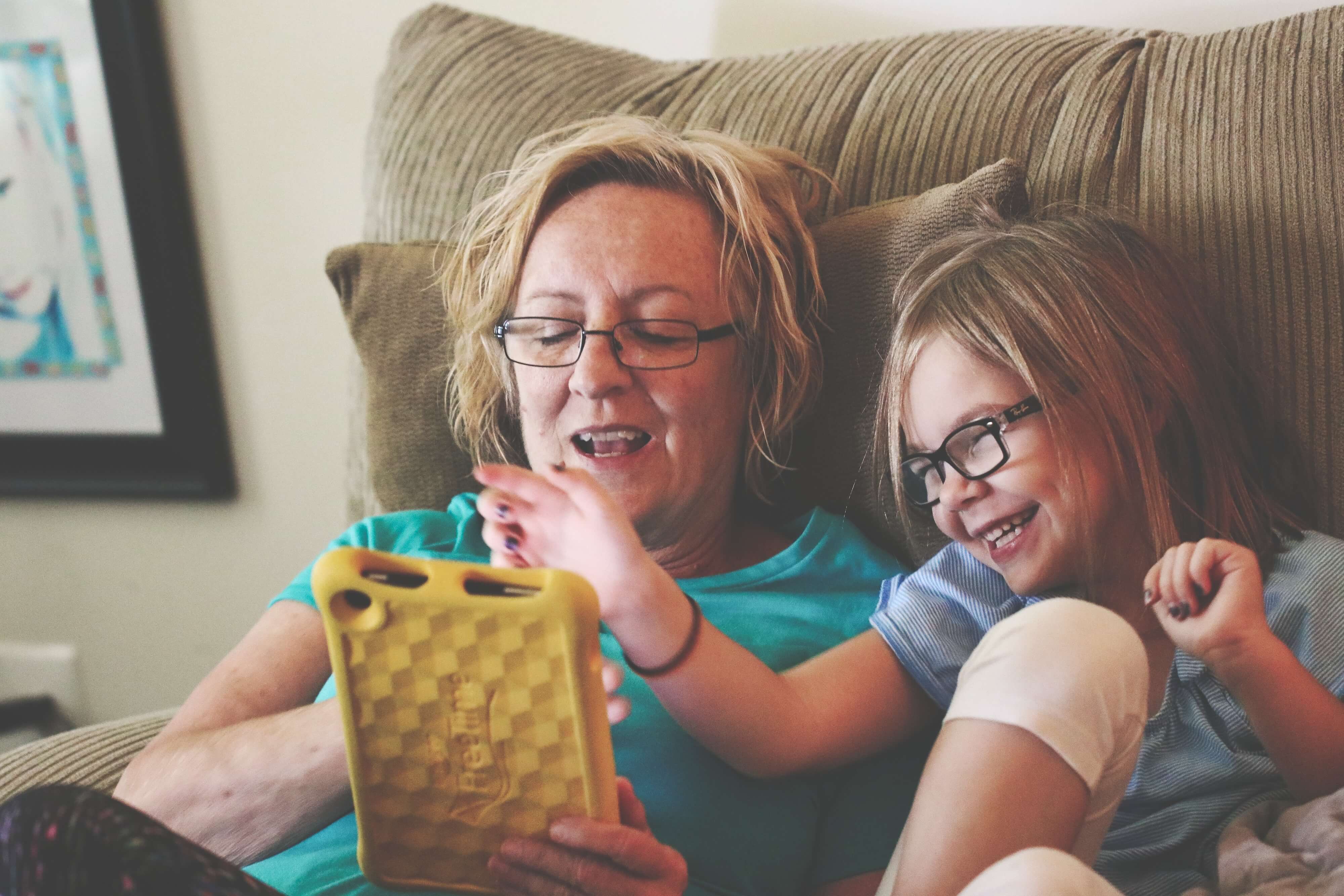High School Psychology Course Helps Students Use Decision Skills to Improve Well-being

We become all-around better decision makers when we know how to manage stress, form habits with intention, and acknowledge reality instead of protecting our egos. We’re more likely to choose rationally instead of reacting reflexively when we understand how our minds process information, which makes Psychology courses a natural place to explore the challenges and curiosities of improving our decision skills. Nearly a third of high school students take Psychology, but most experience either a basic introduction to the history of the academic discipline or the heavy lift of preparing for the AP test, which doesn’t leave much time for them to apply what they learned to their lives. That’s why Kaleidoscope, a group building liberal arts curriculum to prepare high school students to thrive in a quickly evolving world, is leading the implementation of Practical Psychology, a course that “seeks to equip students with the knowledge, skills, and habits they need to flourish in good times and be resilient in bad.”

The question “How useful is this to know in high school and beyond?” guided the development of the Practical Psychology curriculum, noted Kaleidoscope founder Sarah Dillard. Teacher David Panush said, “My primary design principle was for each day to leave students with new ways of thinking about their brains, the brains of humans in general, and some tools that they could consider using to improve their lives.” On the first day of class he asked students to discuss the idea of a good life: what defines it, what gets in the way of it, and what they wanted to learn about crafting one. Students’ interests and concerns informed lessons on effective strategies for learning, studying, and shaping environments to increase motivation. Students also wanted to better understand their emotions, so the course addresses the ways exercise, nutrition, sleep, meditation, and social media choices can impact their mental health. Students keep in mind what they learn about the habit loop and use the tracking tool from the HabitWise program to monitor and reflect on their routine behaviors.
Additionally, Practical Psychology students learn to recognize and resist a variety of cognitive biases that can influence their decisions and their overall wellbeing including confirmation bias, the overconfidence effect, anchoring, and Fundamental Attribution Error. Studying cognitive biases in depth isn’t typical of most high school psychology courses because many of those insights come from the field of behavioral economics, but Dillard explained, “we include it because it has to do with the mind, and learning about it could help students live better lives.” Students keep reflection journals to track moments when they succumb to cognitive biases, and in another activity apply that knowledge to prototyping environments and systems that could help people make better choices. They engage more deeply with what they learn in class through journaling and discussions about books including Thinking, Fast and Slow by Daniel Kahneman and Predictably Irrational by Dan Ariely. Panush said lessons related to everyday decision making are his favorite to teach because he loves surprising students “with all the ways humans mess up their thinking and having them realize that’s exactly the mistake they make all the time.”
Structuring deliberative decisions is another focus of Practical Psychology. After students learn a process to frame the problem, generate and evaluate alternatives, and engage in metacognition, they apply the steps to their independent project experiences. They choose their own topics and gather information through surveys, interviews, and prototypes. They make predictions about what’s feasible to accomplish within the time constraints and learn to update their project plans when they run into obstacles. Winston Churchill High School student Jessica Bowen used her independent project to extend her study of learning and motivation strategies. Bowen wanted to examine how students react to making errors on school assignments, so she surveyed her peers about how they feel about getting things wrong, whether they had opportunities to learn from their mistakes, and how they think their teachers view their mistakes. “After completing my project, I based most of my studying on learning from my mistakes. I advocated for getting quizzes and tests back before unit tests so I could get the best scope of what I needed to work on or practice,” Bowen said. “Although this method might seem obvious, many students, such as myself before [taking the Practical Psychology course from] Kaleidoscope, don’t utilize it to its full potential.”
Thirty students from Washington, D.C. high schools have participated in summer fellowships to vet the goals and topics of Practical Psychology for relevance and interest. Ninety-two percent of students said they better understand their own emotions, thoughts, and behaviors after taking Practical Psychology and all reported they learned better tools and strategies for making decisions. The course will be well-aligned with the forthcoming updates to the National Standards for High School Psychology Curricula, which will increase the emphasis on teaching skills and psychological principles that can be used in everyday life. Panush advocates for other schools to offer Kaleidoscope’s Practical Psychology course because students “are being made anxious and depressed and stressed,” he said. “What can we do to reverse those practices? Practical Psychology is a great first step. Let’s give students the concepts and tools to live healthier and happier lives.”
Kaleidoscope is piloting Practical Psychology as a semester-long course with five high schools in Spring 2020 and welcomes other educators across the United States to contact them about getting involved. Dillard noted that Practical Psychology can fit into a variety of school situations. “We’re talking with public schools and private schools; we’re talking with teachers across all four grades of high school. Some will be using the class during an advisory of life skills-type period; others plan to use it to replace an existing psychology elective,” she said. Teachers who are excited about facilitating an active learning experience, able to foster an environment in which students feel safe addressing mental health and other sensitive topics, and willing to provide feedback on the curriculum to Kaleidoscope are good candidates for teaching Practical Psychology.
For a concise overview of Practical Psychology that you can share with administrators or colleagues, download our flyer. Dillard encourages educators who are interested in participating in the upcoming pilot, teaching semester or year-long electives or smaller curriculum units in the 2020-2021 school year or beyond, or joining the advisory board for the course to email her at sarah@kaleidoscope.education.
If you have additional questions about how psychology and decision skills align, or if you would like the Alliance for Decision Education to introduce you to Kaleidoscope, please email connect@alliancefordecisioneducation.org.

